The choice of campfire wood can greatly impact your overall camping experience. Selecting the right type of wood is crucial for achieving a long-lasting, efficient, and enjoyable campfire. But what exactly makes the best campfire wood? Let’s explore the key factors to consider.
Characteristics of good campfire wood include high heat output, easy ignition, and the ability to burn steadily. Factors to consider when choosing wood include its moisture content, density, and resin content. It’s also important to understand the different types of firewood available for campfires, such as hardwoods and softwoods, each with their own advantages and considerations.
If you’re planning to cook over the campfire, the choice of wood becomes even more critical. The flavors produced by different woods can significantly enhance the taste of your food. Minimal residue and smoke are desirable for a clean and enjoyable cooking experience.
Now, where can you find the best campfire wood? Local sources like fallen trees or dead branches can provide excellent firewood. However, if gathering wood from the surroundings is not possible, there are various purchasing options available.
Properly preparing and storing campfire wood is also essential. Ensuring the wood is properly seasoned, or dried, allows for efficient burning and reduces excessive smoke. Knowing the right cutting and splitting techniques can make the process easier and safer.
Finally, it’s crucial to consider important safety considerations when dealing with campfires. Checking local regulations and restrictions regarding firewood collection and campfire usage is essential. It’s also important to follow fire safety tips to prevent accidents and protect the environment.
By understanding the characteristics of good campfire wood, exploring the different types available, knowing where to find or purchase it, and taking proper safety precautions, you can ensure a successful and enjoyable campfire experience.
What Makes the Best Campfire Wood?
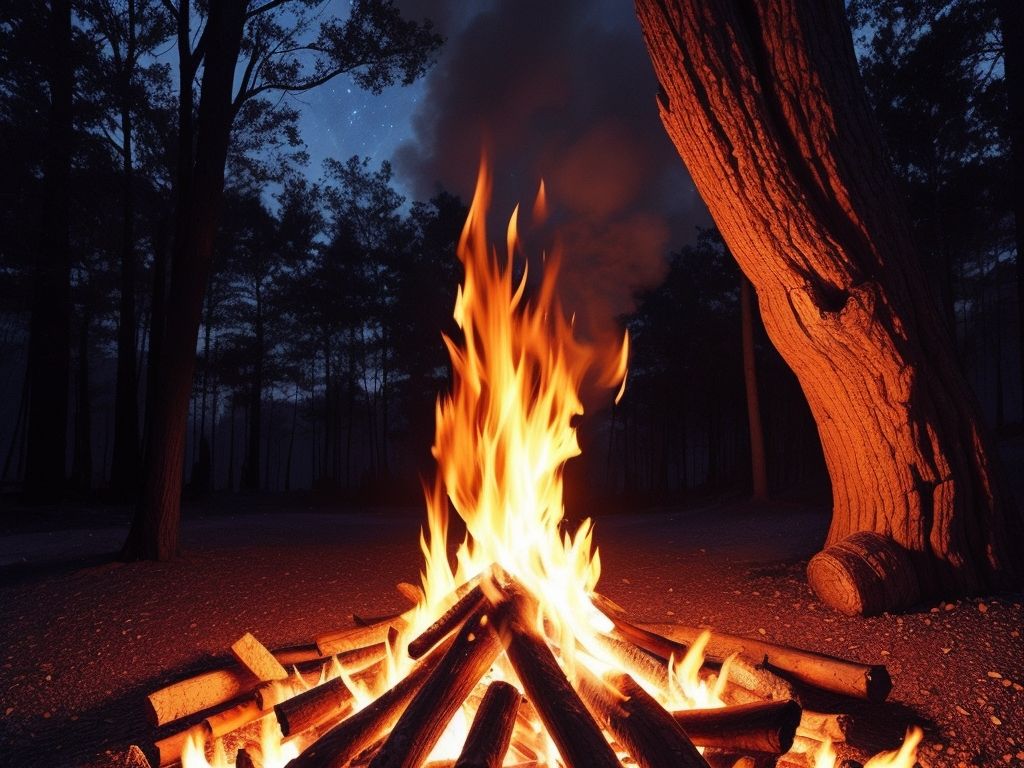
Photo Credits: Www.Sumosurvival.Com by Alexander Green
When it comes to building the perfect campfire, the choice of wood is crucial. In this section, we’ll explore what truly makes the best campfire wood. From the characteristics that define good campfire wood to the important factors to consider, you’ll discover how to elevate your camping experience with a roaring fire that burns brightly and efficiently. So, let’s dive into the world of campfire wood and unravel the secrets to a memorable outdoor gathering.
Characteristics of Good Campfire Wood
When it comes to choosing the best campfire wood, consider the characteristics of good campfire wood:
- Density: Good campfire wood should have a high density, as it burns longer and produces more heat. Opt for hardwoods like oak and hickory, which are known for their density.
- Moisture Content: Using properly seasoned wood is important for campfires. Avoid unseasoned wood as it creates excessive smoke and is difficult to ignite. Look for wood with a moisture content below 20% for the best burning experience.
- Size: Choose small to medium-sized pieces of wood for convenience. These pieces are easier to handle and ignite. Aim for wood pieces that are about the length of your forearm.
- Low Resin Content: Opt for wood with low resin content to minimize sparks and popping sounds. Hardwoods like maple and birch have lower resin content and are great choices for campfires.
- Aroma: If you enjoy the pleasant smell of a campfire, consider using aromatic wood such as pine or cedar. These woods add a delightful fragrance when burned.
Pro-Tip: Always check local regulations and restrictions on campfires and use your campfire wood responsibly to prevent wildfires and ensure safety.
Factors to Consider
One of the factors to consider when choosing the best campfire wood is its characteristics. This includes density and moisture content. For example, dense woods like oak or hickory burn longer and produce more heat than softer woods such as pine or cedar. Additionally, it is important to note the moisture content of the wood. Wet or green wood can be difficult to ignite and produce more smoke.
Another factor to take into account is the availability of the wood. It is ideal to choose firewood that is locally sourced. This helps minimize transportation costs and reduces environmental impact. It is also crucial to ensure that the wood is legal to collect and use in your area. It’s important to check the local regulations.
Your intended use for the campfire wood is also an important consideration. If you plan to use the firewood for cooking, it is vital to select wood that imparts pleasant flavors without leaving behind excessive residue or smoke. Many people prefer using hardwoods like apple or cherry for cooking due to their mild and fruity flavors.
Consider the amount of firewood you will need for your campfire. It is advisable to estimate the quantity based on the duration and intensity of your fire. As a general guideline, you may need approximately one cord (128 cubic feet) of firewood for a weekend camping trip.
By taking all these factors into consideration, you can select the campfire wood that best meets your specific needs. This will enhance your campfire experience and ensure a safe and enjoyable outdoor adventure.
Types of Firewood for Campfires
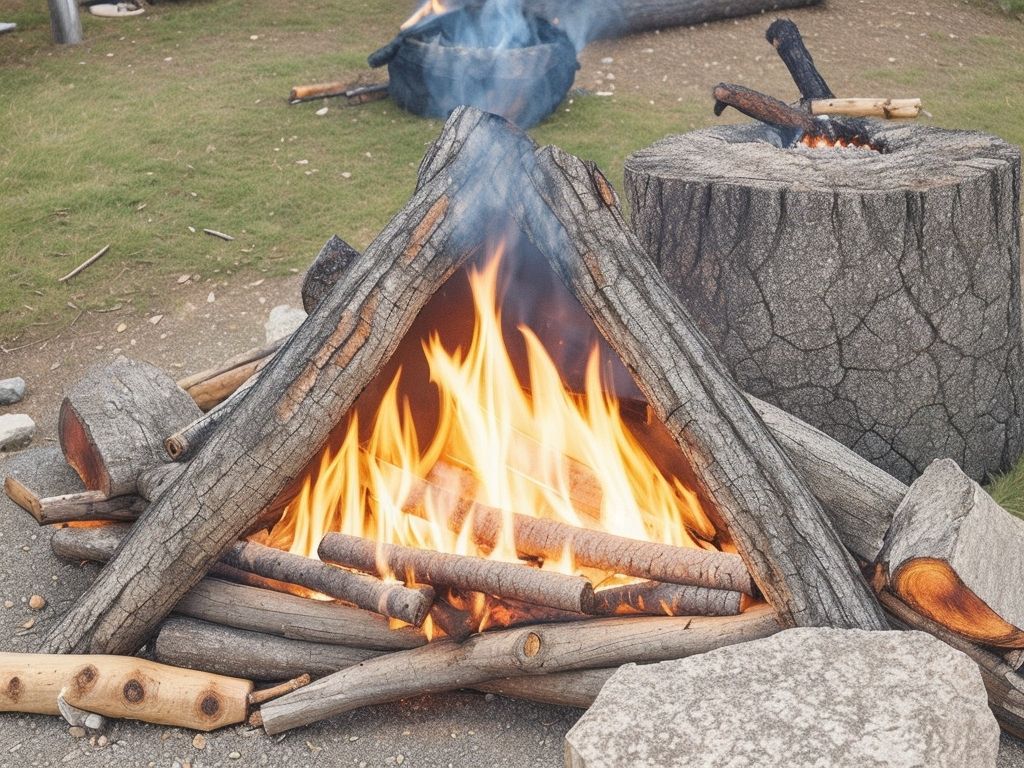
Photo Credits: Www.Sumosurvival.Com by Brian Lopez
When it comes to building a roaring campfire, the type of firewood you choose can make all the difference. Let’s dive into the world of firewood and explore the different types available for campfires. From sturdy hardwoods to fast-burning softwoods, we’ll uncover the unique qualities and advantages each type brings to your outdoor fireside experience. So grab a seat and get ready to ignite your knowledge on the best campfire wood!
Hardwoods
HardwoodsHardwoods are a top choice for campfires due to their long burn time, hot and consistent heat, and pleasant aroma.Popular hardwood options for campfires include oak, hickory, maple, and birch.These hardwoods have a low moisture content, typically around 20%, which allows them to burn more efficiently.Compared to softwoods, hardwoods produce less smoke and spark, creating a safer and more enjoyable fire experience.Hardwoods also generate a bed of hot coals, which is ideal for cooking as it provides even heat distribution and helps retain moisture in food.When using hardwoods for cooking, flavors produced can enhance the taste of the food, adding a smoky and savory element.It’s important to note that different hardwoods may impart slightly different flavors to the food, allowing for experimentation and personal preference.To find hardwoods for your campfire, check with local suppliers, such as firewood vendors or tree removal services.Many areas also have designated campsites where firewood can be purchased or collected.When selecting hardwoods, ensure they are properly seasoned and have been allowed to dry for at least six months to a year.Before using hardwoods, it’s recommended to cut and split them into smaller pieces to facilitate easier ignition and a more controlled burn.Remember to follow local regulations and safety guidelines when building and maintaining a campfire.
Softwoods
python
When it comes to campfire wood, choosing the right type is essential for a successful and enjoyable outdoor experience. Softwoods are a popular choice for campfires due to their ease of ignition and quick burn time.
Softwoods, such as pine, cedar, and fir, have a lower density compared to hardwoods. They are usually lighter and easier to handle, making them ideal for camping trips where portability is key.
| Wood Type | Characteristics | Burn Time |
| Pine | Lightweight and easy to ignite | Fast burn with moderate heat output |
| Cedar | Produces a pleasant aroma | Medium burn time with low to moderate heat |
| Fir | Quick to ignite and produces a crackling sound | Fast burn with moderate heat output |
Softwoods are also known for their resinous properties, which can contribute to a vibrant flame and aromatic experience. It’s important to note that softwoods can generate more smoke and debris compared to hardwoods.
While softwoods may not provide as long-lasting heat as hardwoods, they are excellent for kindling and getting a fire started quickly. They are perfect for shorter camping trips or occasions where a shorter fire duration is desired.
When selecting softwoods for your campfire, ensure they are properly seasoned and dry to optimize their burning efficiency. Avoid using green or damp wood, as it can create excessive smoke and produce less heat.
It’s essential to consider the current conditions, location regulations, and fire safety guidelines when using softwoods for your campfire. Always prioritize safety and responsible campfire practices to ensure a memorable and enjoyable outdoor experience.
Best Campfire Wood for Cooking
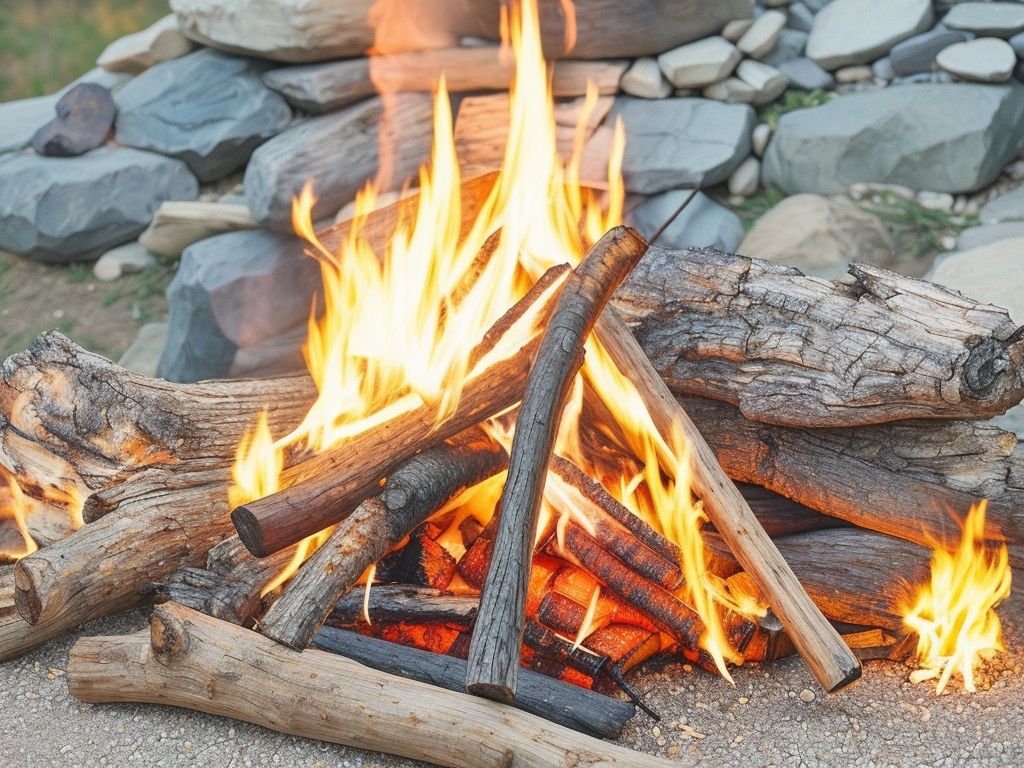
Photo Credits: Www.Sumosurvival.Com by Thomas Walker
When it comes to cooking over a campfire, choosing the right wood can make all the difference. In this section, we’ll explore the best campfire wood for cooking and how it enhances the flavors of your meals. We’ll also discuss the benefits of minimal residue and smoke, ensuring a cleaner and more enjoyable cooking experience. So grab your apron and let’s dive into the world of campfire cooking with the perfect wood!
Flavors Produced
When it comes to campfire wood, the flavors produced can greatly enhance your outdoor cooking experience. Different types of wood can infuse your food with distinct flavors, adding a delicious smoky taste to your meals. Here is a table showcasing some popular campfire woods and the flavors they produce:
| Campfire Wood | Flavors Produced |
| Apple | Sweet and fruity |
| Hickory | Rich and bacon-like |
| Mesquite | Strong and earthy |
| Maple | Subtle and sweet |
| Oak | Robust and smoky |
Remember, the flavors produced not only depend on the type of wood but also the cooking method and the ingredients used. Experimenting with different woods and recipes can help you find the perfect combination for your taste buds.
Pro-tip: Soak wood chips in water before adding them to the fire to generate more smoke and intensify the flavors. This technique is especially useful when grilling or smoking meats.
Minimal Residue and Smoke
When it comes to selecting the ideal campfire wood, one crucial aspect to consider is the presence of minimal residue and smoke. It is important to opt for wood that burns cleanly and does not generate excessive smoke or leave behind a significant amount of residue. Let’s explore some varieties of campfire wood that fulfill this criterion:
1. Hardwoods: Hardwoods such as oak, maple, and birch are exceptional choices due to their ability to produce minimal residue and smoke. They burn at high temperatures, ensuring a consistent and clean flame with limited smoke or residue.
2. Fruitwoods: Fruitwoods like apple and cherry also burn cleanly while emitting a delightful aroma. These types of wood are especially favored for cooking purposes as they subtly enhance the flavor of food without overpowering it.
3. Well-seasoned wood: The utilization of properly seasoned wood is pivotal in reducing residue and smoke. Seasoned wood has been allowed to dry out, resulting in lower moisture content and a cleaner burn.
4. Avoid resinous softwoods: It is advisable to steer clear of resinous softwoods such as pine and spruce as they tend to produce more smoke and residue. Minimizing residue and smoke can be achieved by refraining from using these types of wood.
By opting for hardwoods, fruitwoods, and well-seasoned wood, you can relish a campfire experience with minimal residue and smoke. Not only does this contribute to a more pleasant experience, but it also helps preserve the environment and maintain air quality.
Fact: Are you aware that improper wood burning can release pollutants into the air, thereby contributing to air pollution and potential health hazards? Choosing wood that produces minimal residue and smoke benefits not only your campfire experience but also the environment and your overall well-being.
Where to Find the Best Campfire Wood?
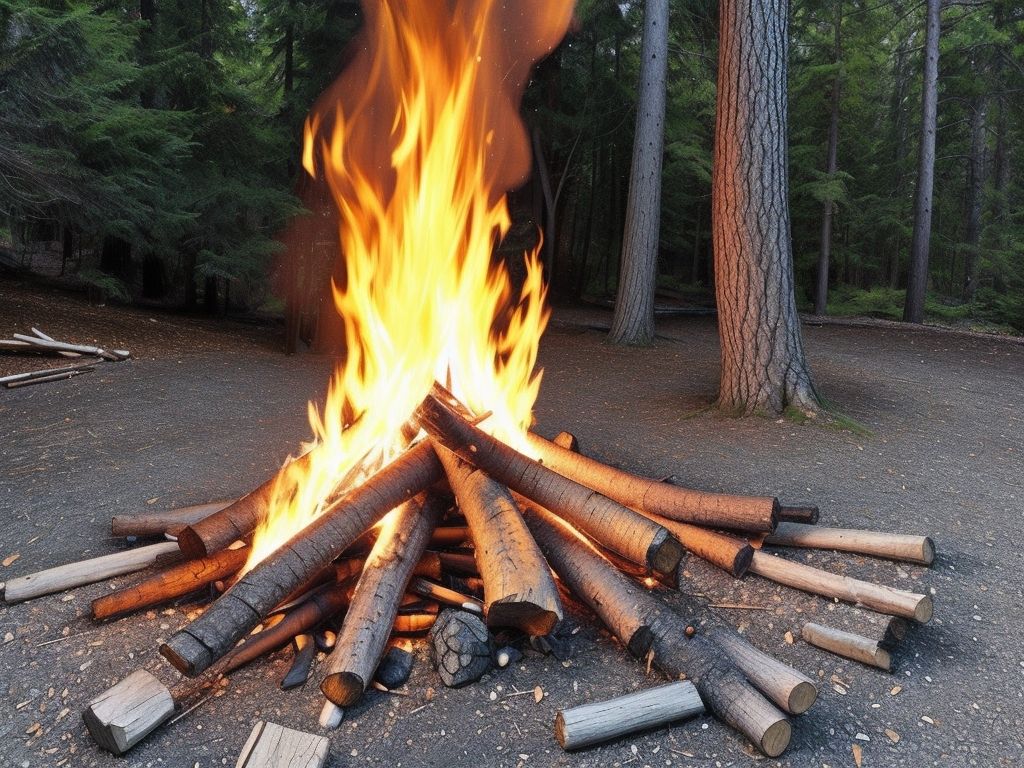
Photo Credits: Www.Sumosurvival.Com by James Garcia
Looking to gather the best campfire wood? Look no further! In this section, we’ll explore Where to Find the Best Campfire Wood, pointing you in the direction of local sources and highlighting convenient purchasing options. So whether you’re a seasoned camper or a first-timer, get ready to discover the secrets to a perfect campfire with top-notch firewood!
Local Sources
When looking for the best campfire wood, considering local sources is a practical option. Here are some advantages of utilizing local sources for campfire wood:
|
Before sourcing firewood locally, consider the following:
|
By considering local sources, you can find the best campfire wood that meets your needs while supporting the local community and promoting sustainability.
Purchasing Options
When it comes to purchasing options for campfire wood, you have several routes to consider to ensure you have the best wood for your fires. Here are some options to keep in mind:
1. Local Sources: Look for local sources of firewood, such as tree services or farm stands, where they may sell bundles or cords of firewood. This is a great option if you want to support local businesses and reduce your carbon footprint.
2. Online Retailers: If you prefer the convenience of shopping from home, you can explore online retailers that specialize in selling firewood. They often offer a wide variety of options, including different types of wood and sizes of bundles or cords.
3. Hardware Stores: Many hardware stores also carry firewood, especially during the colder months. They may offer different sizes of bundles or even have a designated area where you can select and purchase the wood you need.
4. Seasoned Firewood: It’s important to ensure that the firewood you purchase is properly seasoned. Seasoned firewood has been dried for a certain period of time, typically 6-12 months, to reduce moisture content. This makes it easier to light and burn, providing a more efficient and enjoyable campfire experience.
5. Delivery Services: Some online retailers or local sources may offer delivery services, where they bring the firewood directly to your doorstep. This can be a convenient option if you don’t have the means to transport large quantities of firewood yourself.
6. Campgrounds or Parks: If you’re camping at a campground or visiting a park, they may have firewood available for purchase on-site. This can be a convenient option if you didn’t bring your own firewood or if you simply prefer to buy it at your destination.
When considering purchasing options for campfire wood, it’s important to choose a reputable source that offers high-quality wood. Look for suppliers who follow sustainable practices and ensure the wood is properly seasoned. Consider the type of wood you prefer for your campfires and the quantity you will need. By exploring different purchasing options, you can find the best campfire wood that suits your needs and enhances your outdoor experiences.
Preparing and Storing Campfire Wood
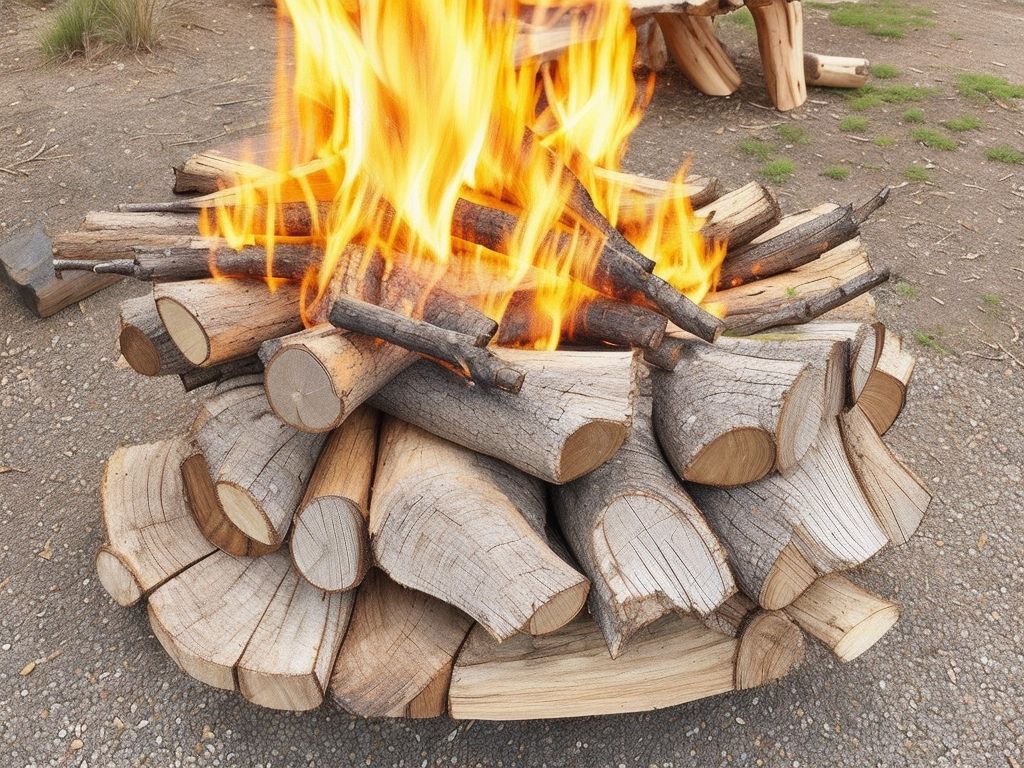
Photo Credits: Www.Sumosurvival.Com by Russell Mitchell
Get ready to level up your campfire game! In this section, we’ll be diving into the exciting world of preparing and storing campfire wood. Discover the secrets of properly seasoned wood and unlock the key to a roaring, long-lasting fire. We’ll also explore cutting and splitting techniques that will make gathering firewood a breeze. So grab your ax and join us on this journey to becoming a campfire wood pro!
Properly Seasoned Wood
Having properly seasoned wood is crucial for a successful and enjoyable campfire. When it comes to properly seasoned wood, there are a few important factors to consider:
- Moisture content: It is essential for properly seasoned wood to have a moisture content of around 20% or less. This ensures efficient burning and reduces smoke production. Using wet or green wood can result in a smoky fire that is difficult to ignite.
- Aged wood: Typically, properly seasoned wood is aged for at least six months to a year. During this time, the wood loses its moisture and becomes dry and brittle.
- Bark: Seasoned wood often has loose or cracked bark, indicating that it has been exposed to the elements and had time to dry out.
- Color: Properly seasoned wood is usually darker in color compared to freshly cut or unseasoned wood. It may have a grayish or weathered appearance.
To ensure you have properly seasoned wood for your campfire, here are a few suggestions:
- Plan ahead: Start gathering and seasoning your firewood well in advance of your camping trip. This will allow enough time for the wood to properly dry out.
- Store it properly: Make sure to store your firewood in a dry, well-ventilated area. Using elevated racks or pallets can help keep the wood off the ground and allow for better airflow.
- Test the wood: If you’re unsure whether your wood is properly seasoned, you can perform a simple test by banging two pieces together. Seasoned wood will produce a hollow, resonant sound, while unseasoned wood will sound dull and solid.
- Buy locally: Purchasing firewood from local sources is an excellent way to ensure that you’re getting properly seasoned wood. Local suppliers are more likely to have wood that has been sourced and seasoned in your specific area.
Cutting and Splitting Techniques
- When it comes to cutting and splitting techniques for campfire wood, it is crucial to follow proper guidelines to ensure safety and efficiency.
- To effectively cut and split campfire wood, it is important to gather the necessary tools such as a sharp axe, a maul, safety goggles, and gloves.
- One of the key steps is selecting the right wood, which should be dry and seasoned for easier cutting and splitting.
- Prior to cutting, it is essential to prepare the cutting area by clearing it of any obstacles or debris to create a safe working space.
- Begin cutting the wood by making a horizontal cut near the base of the log using the axe. Apply pressure with your foot and swing the axe carefully to create a groove.
- Once the initial cut is made, utilize the maul to split the log along the grain. Place the log on a splitting block or a sturdy surface and strike it with the maul to split the wood.
- If the wood is still too large, continue splitting it into smaller pieces until you have manageable sizes for your campfire.
- After splitting, it is advisable to store the wood in a dry and well-ventilated area to allow it to further season.
By following these cutting and splitting techniques, you can ensure that you have well-prepared campfire wood that is easy to ignite and will provide a steady source of heat and light during your camping trip.
Important Safety Considerations
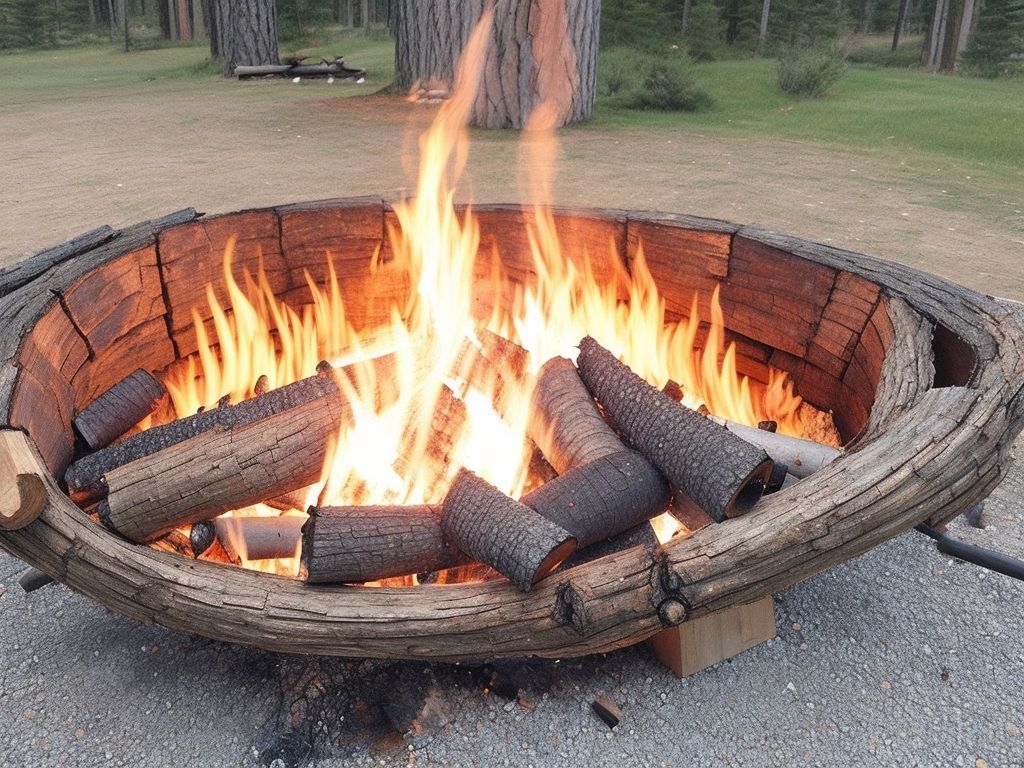
Photo Credits: Www.Sumosurvival.Com by Matthew Wright
When it comes to enjoying a cozy campfire, safety should always be our top priority. In this section, we’ll uncover important safety considerations that every camper should be aware of. From checking local regulations to essential fire safety tips, we’ve got you covered. So grab a marshmallow and get ready to roast them safely with the right campfire wood!
Check Local Regulations
When engaging in campfire activities, it is crucial to check local regulations to ensure compliance with any restrictions or guidelines imposed by the authorities. Adhering to these regulations is essential for maintaining safety and preventing any adverse environmental impacts.
To verify local regulations, you can start by visiting the official website of the relevant park or camping area. Look for information on campfire policies, which include any restrictions on the type and size of firewood allowed, designated fire pit locations, and any temporary bans due to weather conditions or fire danger levels.
Local regulations may specify the specific types of firewood that are permitted. Some areas may only allow the use of locally sourced firewood to prevent the spread of invasive species. It is important to follow these guidelines to protect the local ecosystem.
The regulations may also outline any permits or permissions required for setting up and maintaining a campfire. These permits typically serve to regulate the number of fires, enforce safety protocols, and prevent potential wildfires. Failure to comply with these regulations can result in fines or penalties.
To ensure a safe and enjoyable camping experience, it is crucial to familiarize yourself with and adhere to the local regulations. By doing so, you can enjoy your campfire activities while protecting the environment and ensuring the safety of yourself and others.
Fire Safety Tips
- Always have a fire extinguisher or fire blanket nearby in case of emergencies.
- Clear the surrounding area of any dry leaves, grass, or flammable materials that could catch fire.
- Keep a bucket of water or a water hose nearby to extinguish the fire if it gets out of control.
- Never leave the campfire unattended and always assign someone to be responsible for monitoring it.
- Keep children and pets at a safe distance from the fire and educate them about fire safety.
- Avoid building a campfire on windy days as it can quickly spread and become dangerous.
- Use a fire pit or designated campfire area to contain the fire and prevent its spread.
- Only use dry firewood that has been properly seasoned to reduce the chances of excessive smoke and sparks.
- Avoid throwing any flammable substances or accelerants into the fire as it can cause sudden flare-ups.
- Make sure to fully extinguish the fire before leaving the campsite or going to sleep. Pour water over the fire and stir the ashes until they are cold to the touch.
During the 17th century, the Great Fire of London occurred in 1666, devastating the city and leaving a lasting impact on fire safety. The fire started in a small bakery on Pudding Lane and quickly spread due to strong winds and the close proximity of wooden buildings. It raged for four days, destroying over 13,000 houses, 87 churches, and numerous landmarks.
In the aftermath of the Great Fire of London, significant changes were made to improve fire safety. London’s building regulations were revamped, requiring buildings to be made of brick or stone instead of wood, with wider streets and designated fire breaks. Fire insurance companies also emerged, providing coverage and promoting fire prevention measures.
The Great Fire of London served as a wake-up call for cities around the world, leading to advancements in fire safety practices such as the development of fire departments, hydrant systems, and fire codes. Today, fire safety remains a crucial aspect of building design, emergency planning, and public awareness to prevent the devastating effects of fires.
Some Facts About the Best Campfire Wood:
- ✅ Oak is one of the best wood types to burn in a campfire. It produces substantial heat and burns slow and steady. It is readily available throughout much of the country. (Source: ssfirepits.com)
- ✅ Hickory firewood is even hotter burning than oak. It is a dense hardwood that can be tough to split but burns very well. It is also popular for cooking. (Source: ssfirepits.com)
- ✅ Ash wood is known as some of the best firewood in the world. It burns easily, retains minimal moisture, and doesn’t produce a lot of smoke. It is ideal for use in a campfire and can even burn when green. (Source: ssfirepits.com)
- ✅ Cedar wood is perfect for building a campfire to stay warm. It may not produce a large flame, but it generates excellent heat. Cedar also has a unique and pleasing aroma. (Source: beyondthetent.com)
- ✅ Wood types to avoid burning in a campfire include poplar, spruce, willow, and alder. (Source: ssfirepits.com)